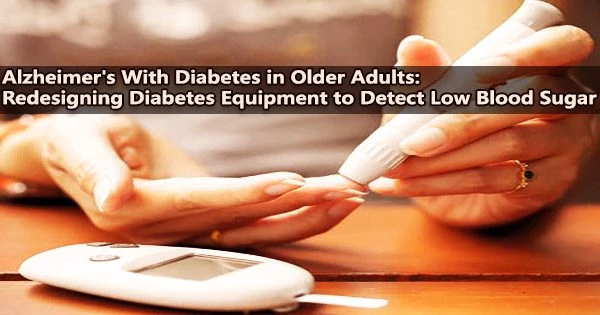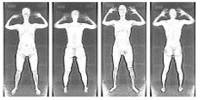In order to improve accessibility and value for older adults with diabetes and Alzheimer’s disease, as well as their caregivers, user-friendly health information tools and technology are being developed and tested by Regenstrief Institute Research Scientist April Savoy, PhD, a human factors engineer and health services researcher.
These devices and technology will be made to offer patients, family members, and medical professionals the glucose metrics they need to diagnose hypoglycemia and choose a course of treatment without the need for many finger sticks.
Hypoglycemia, often known as low blood sugar or hypoglycemia, is a risk factor for older persons with Alzheimer’s and Type 1 or Type 2 diabetes and is frequently undiagnosed. Dizziness, confusion, mood swings, hospitalization, and even death can be brought on by hypoglycemia. Diagnosis and treatment of hypoglycemia can prevent complications.
“Alzheimer’s disease is a progressive disease, and hypoglycemic events can accelerate cognitive decline. That’s why we are focusing on detection of low blood sugar in these older adults with both Alzheimer’s and diabetes,” said Dr. Savoy, assistant professor in the Purdue School of Engineering and Technology at IUPUI.
Patients with dementia have difficulty controlling their blood sugar levels, which can lead to hypoglycemia crises and severe cognitive decline. For Alzheimer’s patients, it can be challenging to insert their fingers in their mouths repeatedly to check their blood sugar levels, adhere to a recommended diet, and exercise. Traditional blood sugar monitoring may provide difficulties for both Alzheimer’s patients and their carers.
Alzheimer’s disease is a progressive disease, and hypoglycemic events can accelerate cognitive decline. That’s why we are focusing on detection of low blood sugar in these older adults with both Alzheimer’s and diabetes.
Dr. Savoy
The study, “Enhancing shared decision-making to prompt and guide individualized care for people with Alzheimer’s Disease and diabetes,” will enroll 75 pairs of older adults with both Alzheimer’s and diabetes, and their family caregivers. Twenty clinicians who see patients with both conditions will also participate.
Numerous research have looked into how poorly controlled diabetes raises the risk of dementia. But, this latest study, which employs a human factors engineering strategy, focuses on older persons who have previously received diagnoses for both diabetes and Alzheimer’s disease.
Dr. Savoy and colleagues will look into particular demographic dynamics, such as how much information regarding blood sugar levels is required, how to get it, and how to encourage shared decision-making among all patients, carers, and clinicians.
“We hope to increase awareness and empower patients and caregivers to make individualized, patient-focused decisions about effective treatment options. Our goal is to prevent hypoglycemia for the growing population of older adults with Alzheimer’s disease and diabetes,” said Dr. Savoy.
Collaborating with Dr. Savoy on this work, which is supported by a new five-year grant from the National Institutes of Health’s National Institute on Aging, are Regenstrief Institute investigators and Indiana University School of Medicine faculty members Michael Weiner, M.D., MPH, who has conducted research on hypoglycemia and dementia, and Greg Sachs, M.D., a geriatrician focused on the aging brain; Regenstrief Institute and Indiana University School of Public Health-Bloomington faculty member Richard Holden, PhD, a human factors engineer who is developing technology for individuals with Alzheimer’s along with their caregivers; and Indiana University School of Medicine faculty member Mary DeGroot, PhD, who studies and treats patients with diabetes.
In a recent commentary published in the peer-reviewed Journal of Diabetes Science and Technology, Dr. Savoy and colleagues discussed the significance of using the human-centered design process for continuous glucose monitoring as well as the need to look into design options and interventions to incorporate continuous glucose monitoring into the care of patients with diabetes and dementia.
The authors claim that they will be able to identify and inform continuous glucose monitoring designs for people with dementia and diabetes with the help of human-centered design. By doing this, they hope to increase access to continuous glucose monitoring with the attainable goal of enhancing detection and treatment of the silent threat posed by low blood sugar.
Authors of “Improving Care for People Living with Dementia and Diabetes: Applying the Human-Centered Design Process to Continuous Glucose Monitoring,” in addition to Dr. Savoy and the collaborators on the new grant (noted above), are Daniel O. Clark, PhD, of Regenstrief Institute and Indiana University School of Medicine, and David Klonoff, M.D., University of California, San Francisco.
















